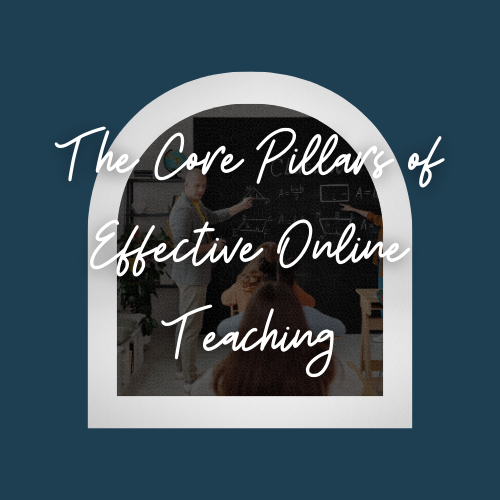
When the traditional classroom setting can’t be replicated, it’s crucial to identify the essential elements that make for a successful online learning experience.

In today’s educational landscape, the shift to online teaching is not merely a new avenue for educators; it has become an imperative toolkit for engaging learners across various disciplines. Whether you’re a seasoned online instructor or are venturing into virtual education for the first time, the digital classroom presents a unique set of opportunities and challenges that require innovative approaches to pedagogy.
This in-depth four-part guide to online teaching is crafted for educators who aim to deliver information and create an effective, memorable, and collaborative learning experience for their students. By mastering the art of online education, you’ll pave the way for academic excellence and student satisfaction, setting the stage for enriched learning that transcends geographical boundaries.

When the traditional classroom setting can’t be replicated, it’s crucial to identify the essential elements that make for a successful online learning experience. Each aspect plays a role in the educational ecosystem, from setting the foundation for a course to ensuring that every student can reach their full academic potential. Here are the core pillars around which educators can build their online teaching strategy:
The first step in the digital education frontier is establishing a virtual space conducive to learning. This encompasses the aesthetic design of your online platform, which should be clear, user-friendly, and welcoming, along with the navigational ease for your students. Furthermore, setting clear expectations, guidelines, and norms for online behavior encourages participation and fosters a sense of community within the digital walls of your classroom.
Ensure that your chosen Learning Management System (LMS) or course website is well-organized, with clear labels for assignments, materials, and communication avenues. Just as a physical classroom might have posters or whiteboards, consider how digital media can create an engaging backdrop that supports your course’s thematic content.
Personal connection is often one of the first casualties of online learning, but it is possible to build strong relationships virtually. Incorporate elements of your personality into your online presence through videos, voice messages, or regular communication. Additionally, encourage students to introduce themselves, offering an opportunity for familiarity and early networking and support opportunities.
The digital landscape offers many tools to streamline and enhance the educational process. Selecting the ideal platform for your course, whether virtual classroom software for synchronous learning or discussion boards and project management apps for asynchronous communication, hinges on aligning with your course needs and learning objectives.
When selecting tools, prioritize functionality and accessibility. It’s essential that both you and your students feel comfortable using the chosen technologies. Remember, even the most advanced tool is ineffective if it presents a barrier to its users. Furthermore, be ready to pivot if a tool isn’t meeting your course’s needs.


